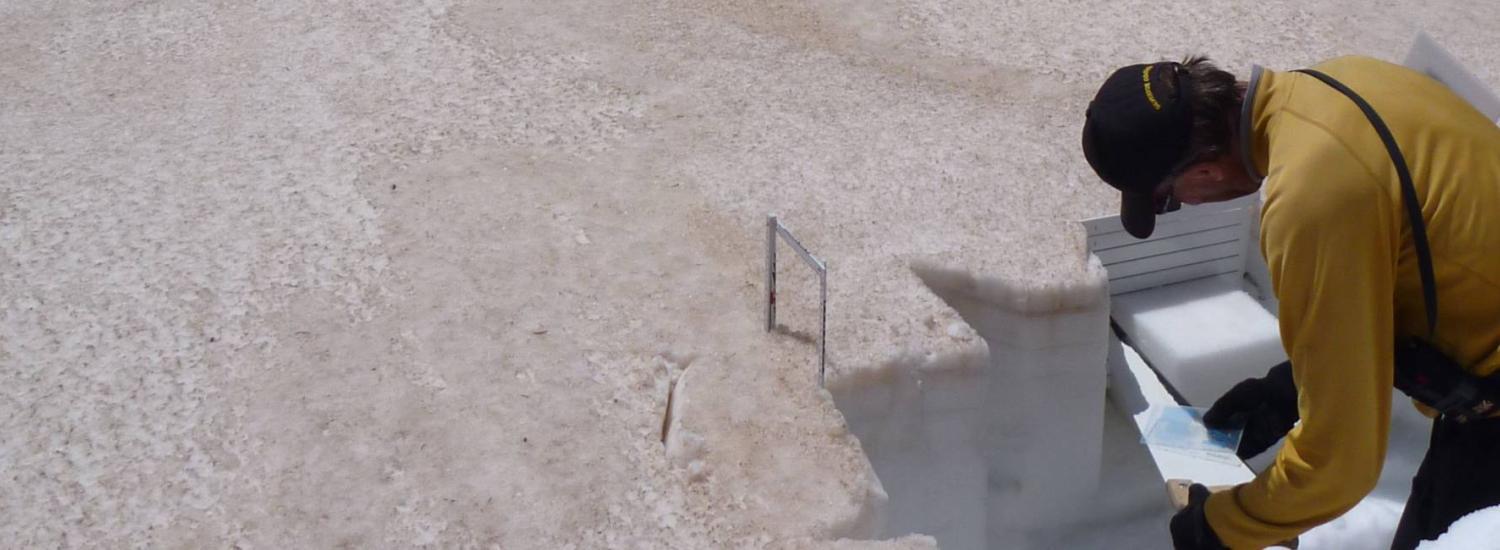Putting Science to Work
Western Water Assessment uses seed grant money from CU Boulder to develop usable science program

Last week, in a brightly lit classroom on the third floor of the SEEC building, fueled by bagels and bananas, a group of about 20 scientists, PhD students and researchers gathered for a workshop on what could be considered a transformational concept—usable science.
“Science communication is often one-way,” explains Elizabeth McNie, a research scientist with Western Water Assessment (WWA), which led the workshop. “We tell you the information. But usable science is about doing science in a different way, more bi-directional. There’s more give and take.”
With usable science, scientists have a better understanding of how their research will be used and the people using the research have their needs addressed. Essentially, McNie points out, it’s more about shaping the research agenda with those who are affected by a particular issue, rather than just handing them the results of a study and expecting everything to work out.
She gives an example from developing countries, where locals burn wood, coal or dung to fuel their cookstoves, which they generally still use indoors. This creates indoor air pollution, which poses a serious health risk. Researchers and scientists came up with a solution: Solar ovens and stoves made of inexpensive materials that are both affordable and easy to repair. Voila! Problem solved! But when the stoves were distributed, no one used them. Turns out, the people in these countries headed out to the fields to work at sunrise and didn’t return until sunset, rendering the solar cookstoves useless.
That anecdote perfectly illustrates the potential disconnect between science and reality. While those stoves might have proved incredibly helpful in some contexts, the researchers didn’t communicate with the people who would be using them to find out what the best solution might have been. This disconnect is what WWA is hoping to address using seed grant money from CU Boulder. They’ll be working with Earth Lab, an initiative funded through CU Boulder's Grand Challenge, to develop workshops and a class on usable science.
Usable science, says McNie, comes into play when science is called upon to solve specific problems. It has three central characteristics: It’s salient—timely, related to the problem at hand; it’s credible—high quality and conducted and vetted according to accepted standards (often but not always peer review); and it’s legitimate—it’s not produced with any political suasion or bias. The driving force in all of this are trust in relationships and reputation. “If the information is coming from CU,” says McNie, “People will trust it because we’ve established a good reputation for ourselves through previous work.”
While this first workshop is aimed at teaching scientists, researchers and grad students about the basics of usable science, WWA hopes to follow up with other workshops that will help them learn the process of doing that kind of research. And during the spring semester of 2017, McNie will also be teaching a graduate level class on the topic.
Emily CoBabe-Ammann is the Director of Strategic Projects in the Research and Innovation Office. She’s been a long-time supporter of the idea of usable science and encouraged WWA to apply for the grant money and create this programming. “We need to keep doing papers and doing basic science,” she explains, “But having a team that understands what usable science is—if we want to effectively address societal issues, this is critical.”
As she points out, the goal is not to supplant traditional academic science methods but rather to enhance them. “It changes who we are as a university when we can add usable science credibly to our portfolio,” she explains. “It transforms the conversations we can have and transforms the way we think about our role.
She sees WWA’s workshop, as well as support from CU Boulder senior leadership, as a concrete step toward building the university’s capacity to participate in and lead the usable science movement toward usable science. “We, as a scientific community, have a social contract to add to the world’s knowledge but also to solve our problems,” says CoBabe-Ammann. “Part of that social contract is identifying areas where we can make a difference, as well as building bridges with stakeholders to accomplish those tasks.”